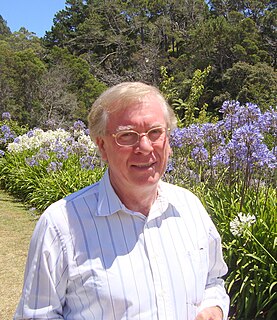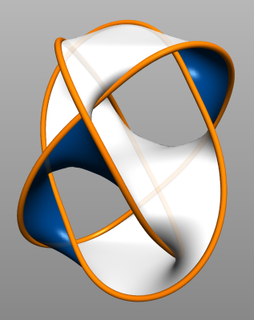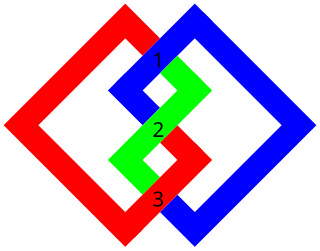In the mathematical theory of knots, a Berge knot (named after mathematician John Berge) or doubly primitive knot is any member of a particular family of knots in the 3-sphere. A Berge knot K is defined by the conditions:

In topology, knot theory is the study of mathematical knots. While inspired by knots which appear in daily life, such as those in shoelaces and rope, a mathematical knot differs in that the ends are joined together so that it cannot be undone, the simplest knot being a ring. In mathematical language, a knot is an embedding of a circle in 3-dimensional Euclidean space, R3. Two mathematical knots are equivalent if one can be transformed into the other via a deformation of R3 upon itself ; these transformations correspond to manipulations of a knotted string that do not involve cutting the string or passing the string through itself.

In mathematics, a knot is an embedding of a circle S1 in 3-dimensional Euclidean space, R3, considered up to continuous deformations (isotopies). A crucial difference between the standard mathematical and conventional notions of a knot is that mathematical knots are closed—there are no ends to tie or untie on a mathematical knot. Physical properties such as friction and thickness also do not apply, although there are mathematical definitions of a knot that take such properties into account. The term knot is also applied to embeddings of S j in Sn, especially in the case j = n − 2. The branch of mathematics that studies knots is known as knot theory, and has many simple relations to graph theory.

In mathematics, a 3-sphere, or glome, is a higher-dimensional analogue of a sphere. It may be embedded in 4-dimensional Euclidean space as the set of points equidistant from a fixed central point. Analogously to how the boundary of a ball in three dimensions is an ordinary sphere, the boundary of a ball in four dimensions is a 3-sphere. A 3-sphere is an example of a 3-manifold.
Contents
- K lies on a genus two Heegaard surface S
- in each handlebody bound by S, K meets some meridian disc exactly once.
John Berge constructed these knots as a way of creating knots with lens space surgeries and classified all the Berge knots. Cameron Gordon conjectured these were the only knots admitting lens space surgeries. This is now known as the Berge conjecture.
A lens space is an example of a topological space, considered in mathematics. The term often refers to a specific class of 3-manifolds, but in general can be defined for higher dimensions.
In topology, a branch of mathematics, a Dehn surgery, named after Max Dehn, is a construction used to modify 3-manifolds. The process takes as input a 3-manifold together with a link. It is often conceptualized as two steps: drilling then filling.

Cameron Gordon is a Professor and Sid W. Richardson Foundation Regents Chair in the Department of mathematics at the University of Texas at Austin, known for his work in knot theory. Among his notable results is his work with Marc Culler, John Luecke, and Peter Shalen on the cyclic surgery theorem. This was an important ingredient in his work with Luecke showing that knots were determined by their complement. Gordon was also involved in the resolution of the Smith conjecture.











